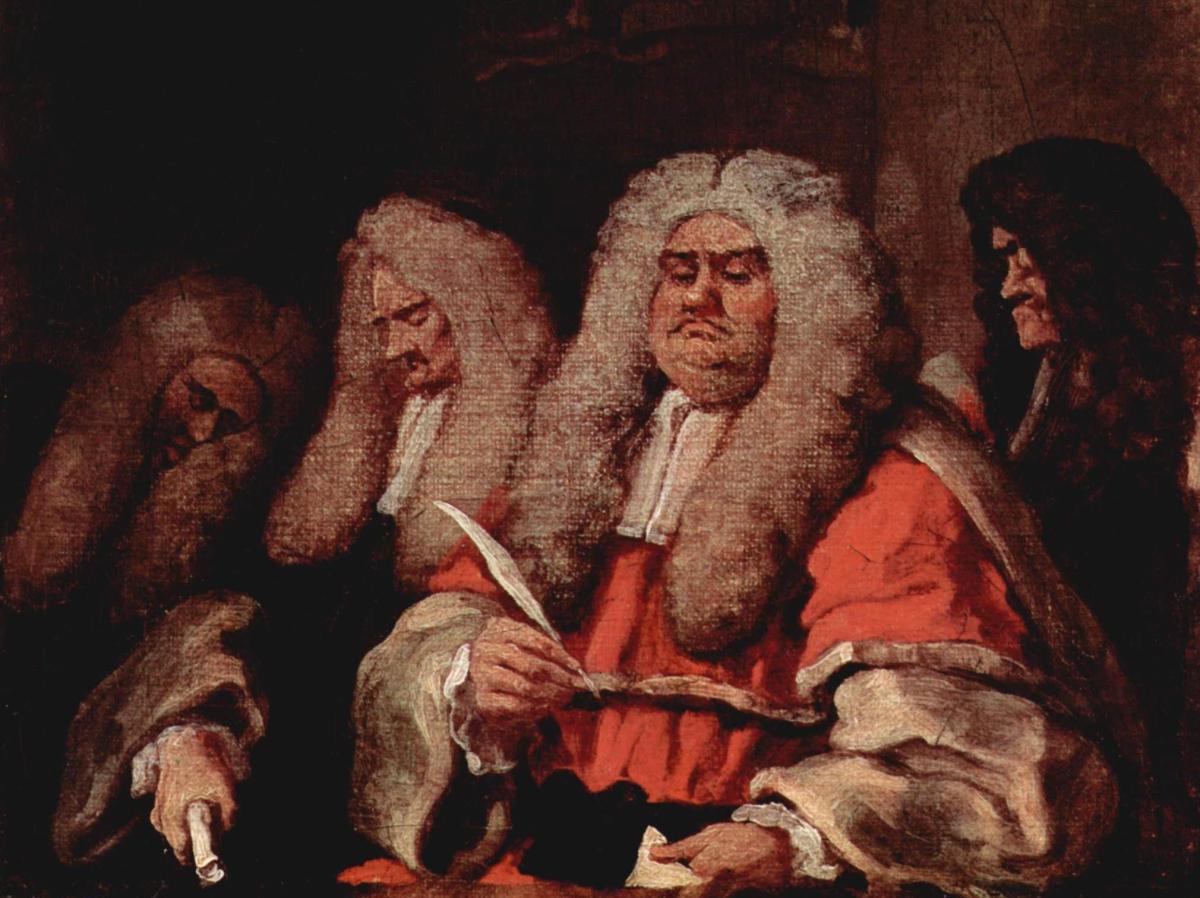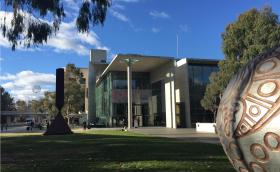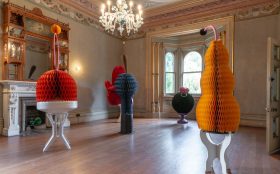William Hogarth’s The Bench (1758) via Wikipedia
The first response you receive when you are identified as the judge of an art exhibition is sympathy – not for the difficult task ahead but because your decisions will most likely be challenged. Assessing art is regarded as “so subjective” that ultimately the decision you make will be simply a “matter of personal opinion” and hence unsupportable in any public forum.
Misguided and inherently insulting as these presumptions are, they are presented with concerned deference. What they imply is that you are working on very shaky ground with a complete lack of evidence on which to justify your decisions.
Although propelled into this position of power you and your fellow judges have feet of clay and with no court of appeal to confirm your pronouncements everyone has the license to disagree with impunity. It is an attitude that undermines the arts and relegates them to the minor leagues in a society where scientific objectivity is the gold standard.
The same principles that underscore assessment and review in science or any discipline are also the basis of judgements made in the arts.

Wittgenstein’s animals
As philosopher Ludwig Wittgenstein pointed out with his duck/rabbit illustration, whatever the field of inquiry there is always a degree of interpretation that is required to make sense of the objective data before us.
It is possible to cite the objective features of this drawing to confirm its reading as either a duck or a rabbit. Neither is wrong because it is possible to explain to others how you arrived at your interpretation based on the evidence before you.
Of course if they fail to see how that line can be read as a duck once they have confirmed it in their consciousness as a rabbit this doesn’t undermine the objectivity of both readings, because while it is possible to interpret the line as either a duck or a rabbit, there are not unlimited choices.
It cannot be read as a ship or a grain silo, for example, because the objective evidence won’t support that interpretation.
Experience and informed knowledge of any field increases a person’s ability to make these reasoned interpretations.
In science, the law, sport or almost any sphere of interest expertise is acknowledged – yet in the arts specialist knowledge is demoted to a form of effete connoisseurship. No matter how many qualifications or years of professional engagement you have your credibility is undermined by this assumption of subjectivity.

Why these judges?

My role as one of the three judges of the Mid-West Art Prize at Geraldton in Western Australia brought these issues once more into focus.
The same suppositions about reliance on personal preference were “sympathetically” offered by concerned members of the audience – yet I would contend that the process my fellow judges Paola Anselmi and Allison Archer undertook was an excellent example of objectivity in decision-making.
First, we were well qualified and experienced in the visual arts.
We all have professional careers as arts administrators, curators, and writers, and we are well versed in looking at artworks and understanding the creative process. Our task was very specific, and the criteria on which we made our judgements were clearly articulated. As a result, we were well prepared for the task of assessing, comparing and reviewing the sixty works hung in the Geraldton Regional Art Gallery.
Following an independent assessment of the exhibition we regrouped to discuss our judgements and we concurred unanimously on our choice of the winning entry in five of the six categories.
In the final category, we all listed the same two artists and made a final decision on a majority vote.
This unanimity is not unusual yet it is always greeted with surprise or even disbelief.
While Chair of the Visual Arts Board of the Australia Council, I was required to report on the seven-member panels decisions where the standard deviation was greater than 3 on a ranking scale of 7.
After assessing 800 or more applications, this situation arose in less than 10% of decisions across the entire portfolio of applications. In the New Work Emerging and Established categories it was less than 6%. Most often this was not a disagreement on whether or not the candidate should or should not be awarded a grant but on the degree of support.
In Geraldton, the consistency and objectivity of our assessment process led to a unanimous decision to award Paul Kaptein’s remarkable portrait of a FIFO miner Everything is Nothing this year’s Mid-West Art Prize and Penny Coss’s painting On my Radar the second prize.
Frank Walsh Snr was awarded the Mid-West Aboriginal Prize for Wandarrie Country Rock Art, Kieran Ingram’s Old Lies won the Youth Award and Karl Monaghan won the Mid West award for his print Heads Up with the Highly Commended award going to Vicki Hardy’s Consequences.
Rather than be being a matter of personal opinion we brought our knowledge and experience to the process of evaluation and the resulting unanimity underscored the objectivity of our decision-making.
This article was originally published on The Conversation. Read the original article.






